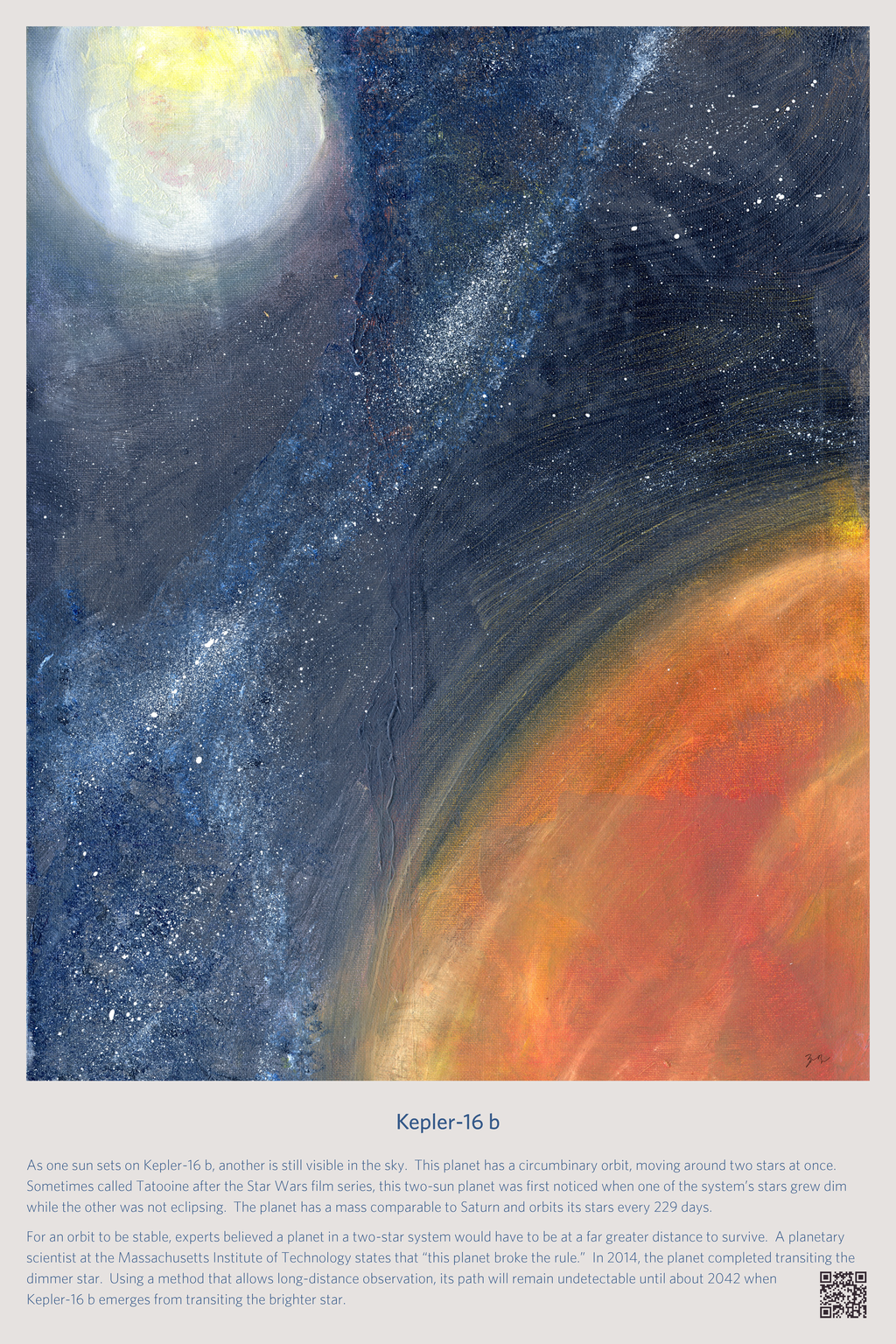 |
Kepler-16 bAs one sun sets on Kepler-16 b, another is still visible in the sky. This planet has a circumbinary orbit, moving around two stars at once. Sometimes called Tatooine after the Star Wars film series, this two-sun planet was first noticed when one of the system’s stars grew dim while the other was not eclipsing. The planet has a mass comparable to Saturn and orbits its stars every 229 days. For an orbit to be stable, experts believed a planet in a two-star system would have to be at a far greater distance to survive. A planetary scientist at the Massachusetts Institute of Technology states that “this planet broke the rule.” In 2014, the planet completed transiting the dimmer star. Using a method that allows long-distance observation, its path will remain undetectable until about 2042 when Kepler-16 b emerges from transiting the brighter star. MediumOil on Canvas ArtistEva Bod ’20 Curated ResourcesKepler-16 b, Exoplanet Catalog, Exoplanet Exploration, NASA Kepler-16 b, Eyes on Exoplanets, Exoplanet Exploration, NASA Kepler-16 b, Exoplanet Travel Bureau, Exoplanet Exploration, NASA “Your Guide to Exoplanets,” The Planetary Society “The Different Kind of Exoplanets You Meet in the Milky Way,” The Planetary Society |
 |

